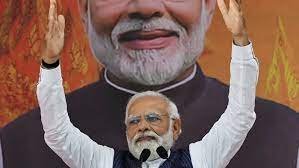The Bharatiya Janata Party (BJP), India’s ruling party, suffered a setback in the state of Karnataka recently, raising questions about its future electoral prospects. As the party gears up for the crucial 2024 general elections, it is inevitable that the BJP will be formulating a comprehensive comeback strategy. This article aims to explore the potential elements of the BJP’s strategy in light of the Karnataka setback and the prevailing political landscape in India.
Assessing the Karnataka Setback:
The BJP’s defeat in Karnataka, where it had a strong foothold, signifies a warning sign for the party. The loss can be attributed to a variety of factors, including internal dissensions, factionalism, and anti-incumbency sentiments. The BJP’s strategists would need to address these issues and take corrective measures to regain lost ground in the state.
Building Strong Alliances:
One potential strategy for the BJP would be to focus on building robust alliances with regional parties across India. The party’s success in previous elections can be partially attributed to its ability to form coalitions with like-minded parties. Strengthening ties with regional powerhouses could help the BJP expand its reach and offset potential losses in specific regions.
Policy Reorientation:
To counter the growing discontent among sections of the electorate, the BJP might consider reorienting its policies and priorities. This could involve addressing issues such as unemployment, economic inequality, and agrarian distress. By presenting a more inclusive and welfare-oriented agenda, the party can broaden its appeal and attract a wider voter base.
Focused Campaigning:
The BJP’s comeback strategy is likely to involve an intensive and focused campaign targeting specific voter segments. By analyzing electoral data and understanding the aspirations of different sections of society, the party can tailor its messaging and policies to resonate with diverse demographics. Additionally, leveraging digital platforms and social media will be crucial in reaching out to young voters who have a significant influence on election outcomes.
Leadership and Organization:
The BJP has been known for its strong leadership and organizational prowess. Strengthening the party’s leadership at the national, state, and grassroots levels will be imperative to ensure effective coordination and mobilization of resources. The BJP may consider reinvigorating its state units, fostering intra-party democracy, and nurturing emerging leaders to rejuvenate its ranks.
Regional Dynamics:
While national politics play a crucial role, regional dynamics cannot be overlooked. Understanding the specific socio-political landscapes of different states and formulating region-specific strategies will be essential for the BJP’s resurgence. This approach requires astute political acumen, empathy towards regional aspirations, and an ability to forge alliances based on mutual interests.
Leveraging Incumbency:
Despite the setback in Karnataka, the BJP still holds power in several states and at the center. The party can leverage its incumbency advantage by showcasing its achievements, implementing popular policies, and addressing local concerns. Demonstrating effective governance in these regions could enhance the party’s credibility and appeal to voters nationwide.
The BJP’s defeat in Karnataka has undoubtedly posed a challenge for the party, but it is not insurmountable. As the 2024 general elections draw nearer, the BJP is likely to devise a well-rounded comeback strategy. This strategy may involve building strong alliances, reorienting policies, focused campaigning, effective leadership, understanding regional dynamics, and leveraging incumbency advantages. The party’s ability to adapt, learn from setbacks, and connect with diverse electorates will ultimately determine its success in the upcoming electoral battle. Only time will tell how the BJP shapes its strategy and whether it can reclaim lost ground to emerge victorious in 2024.


